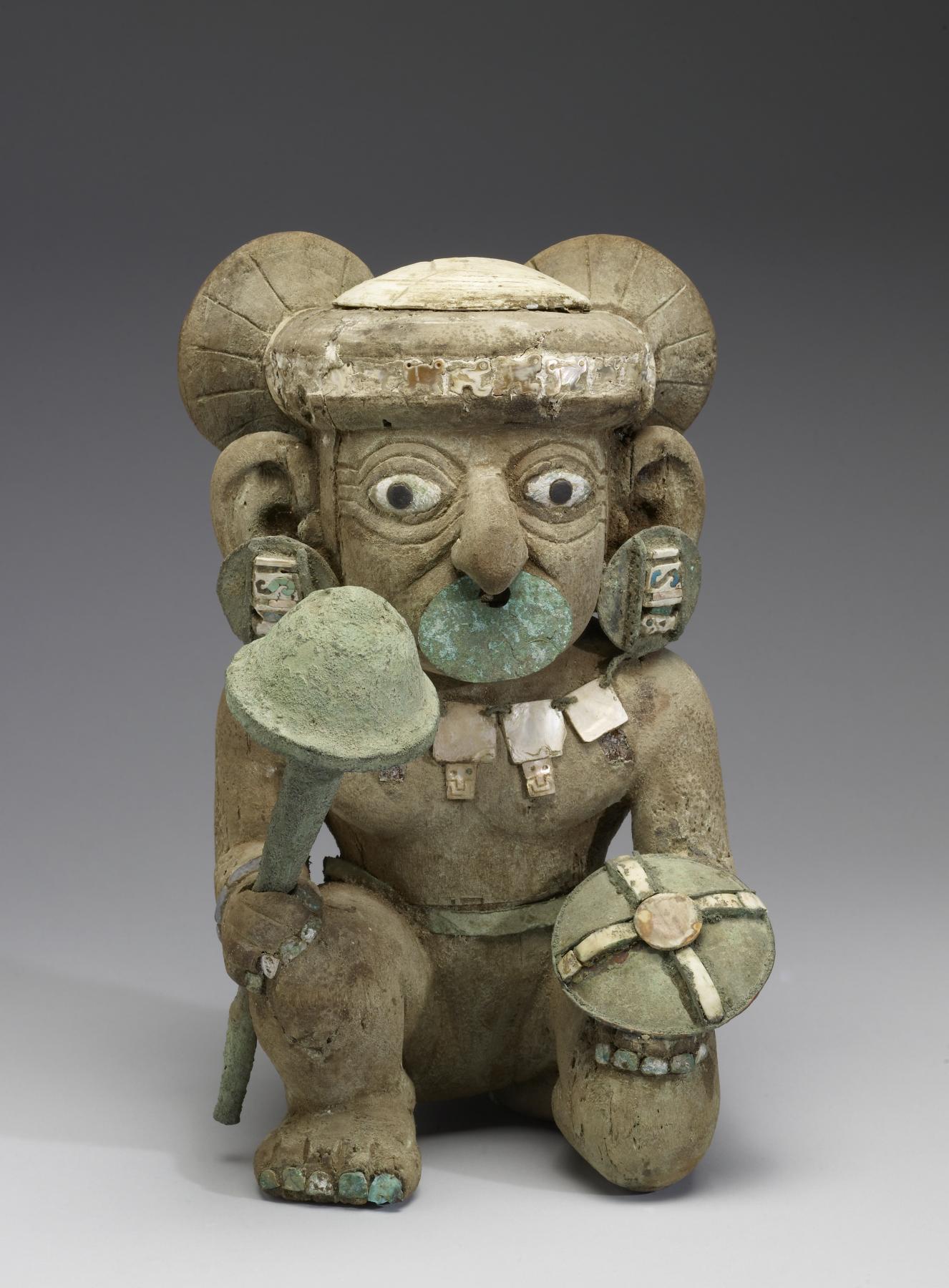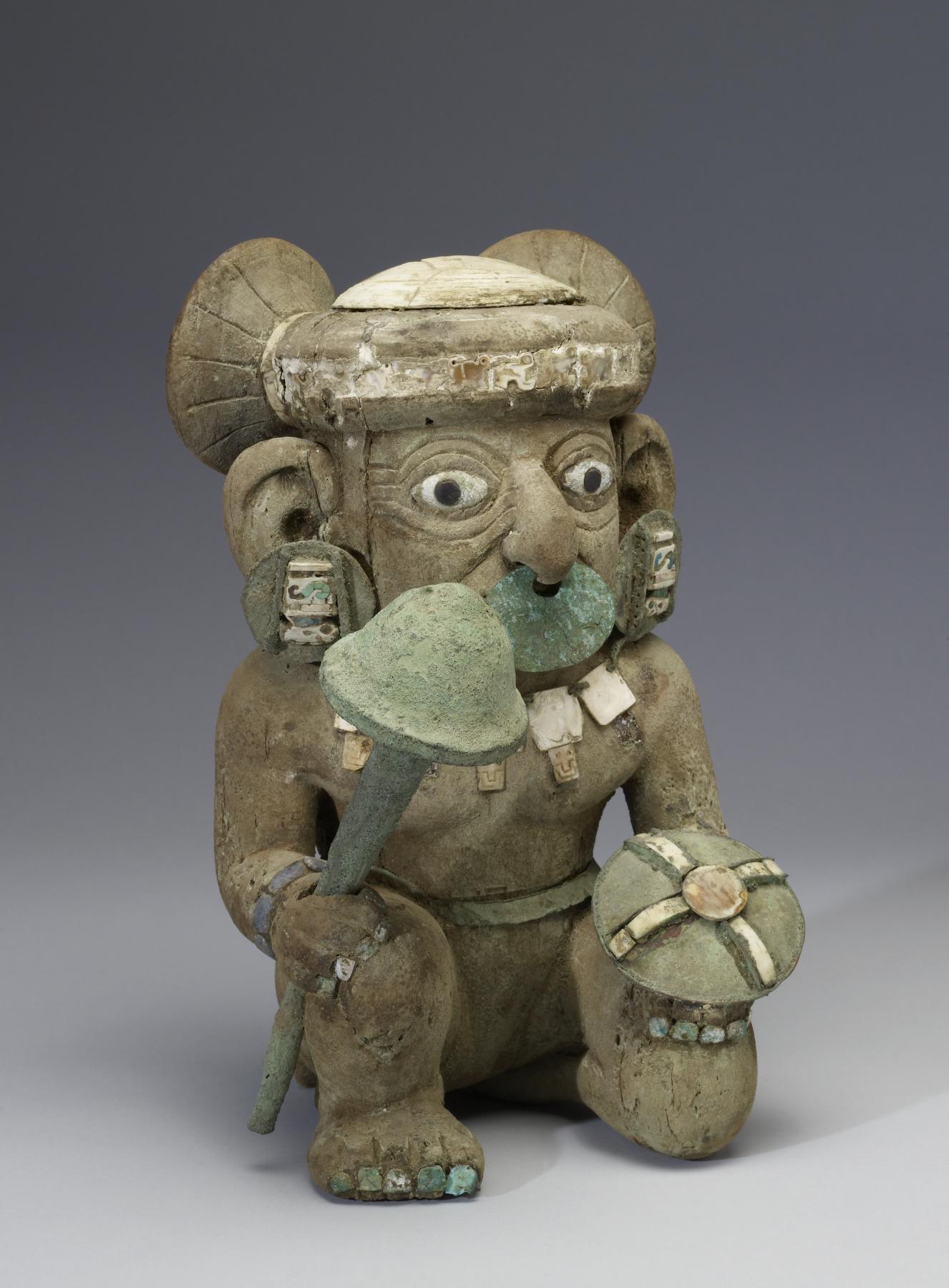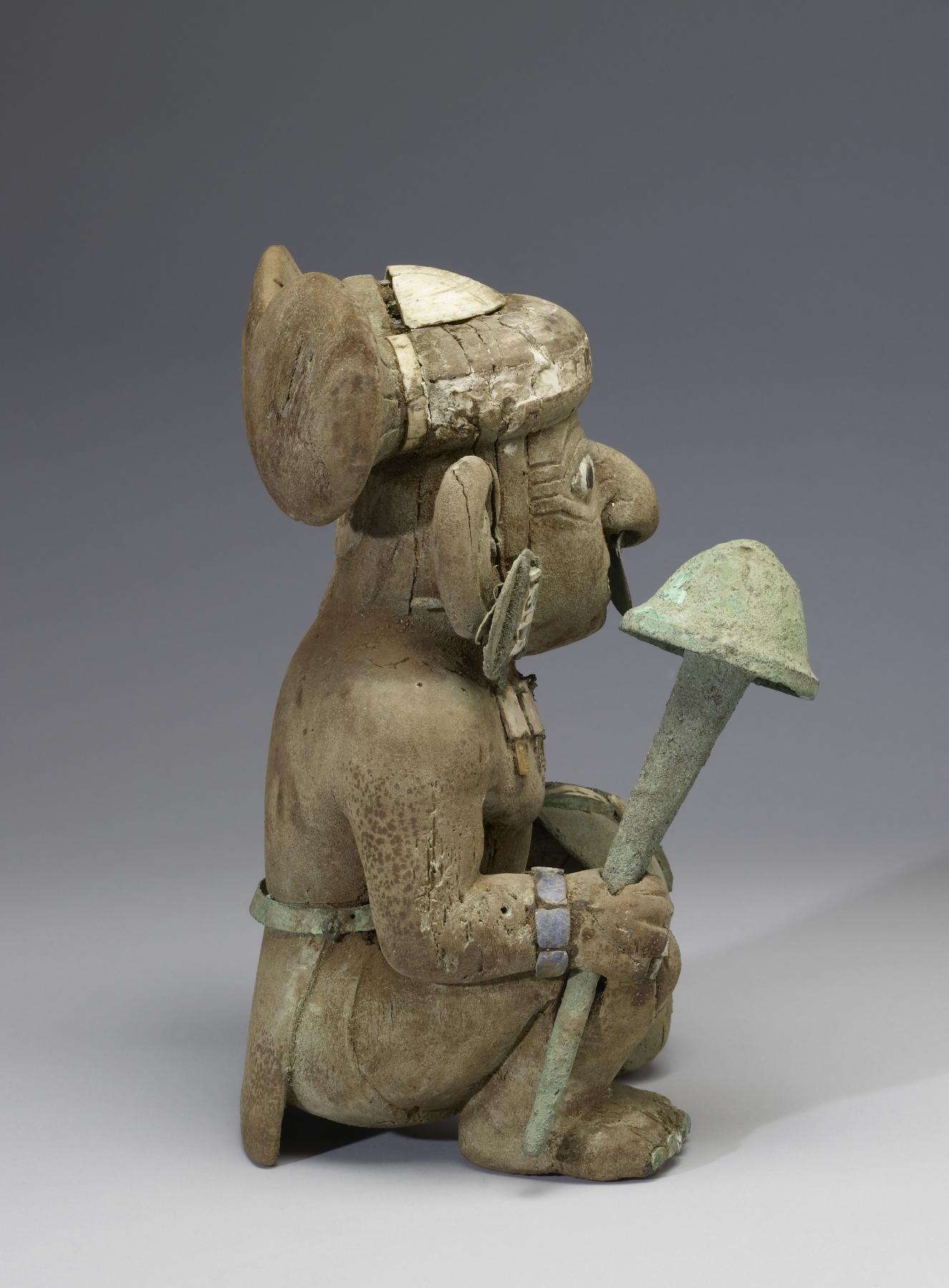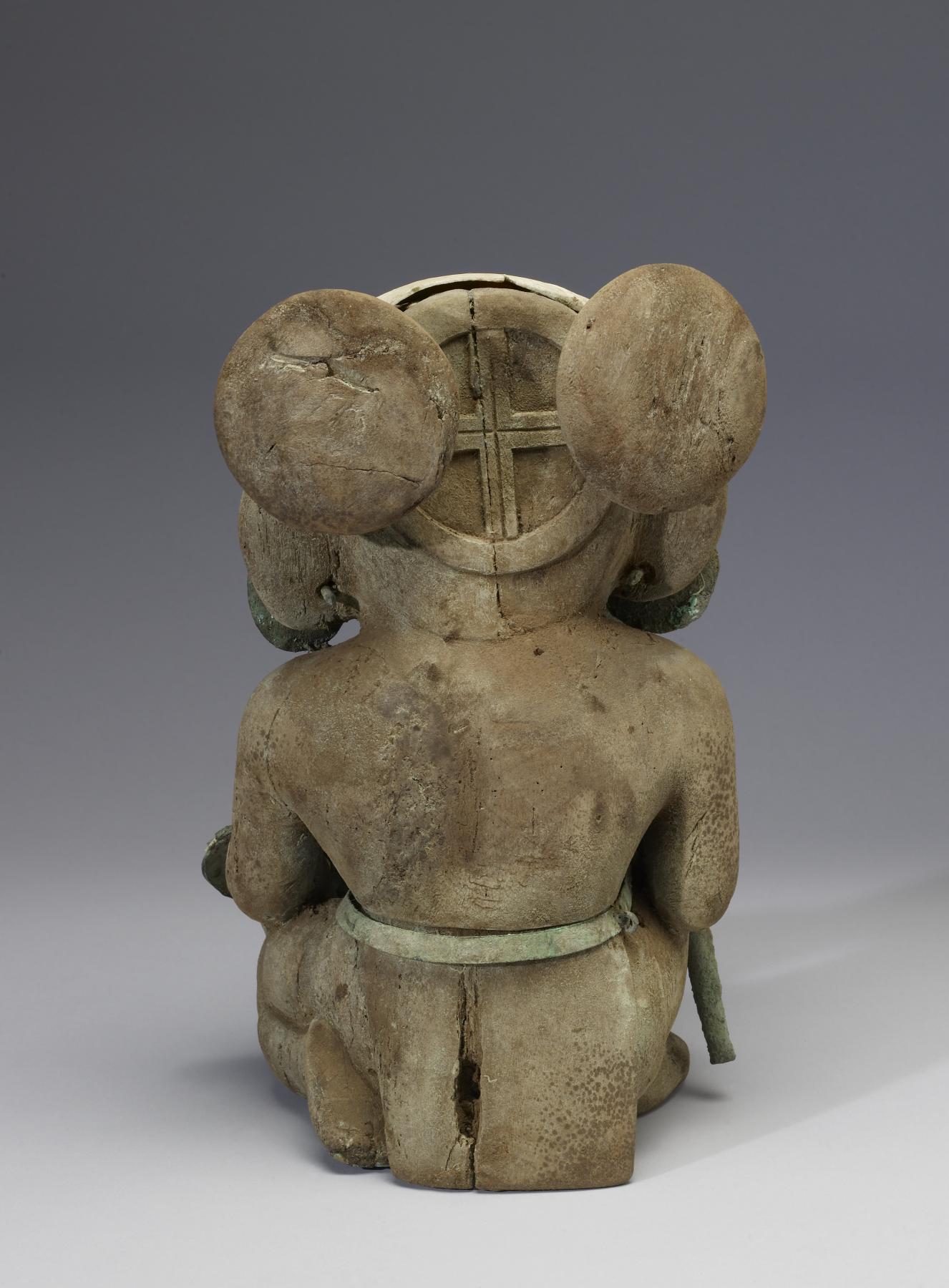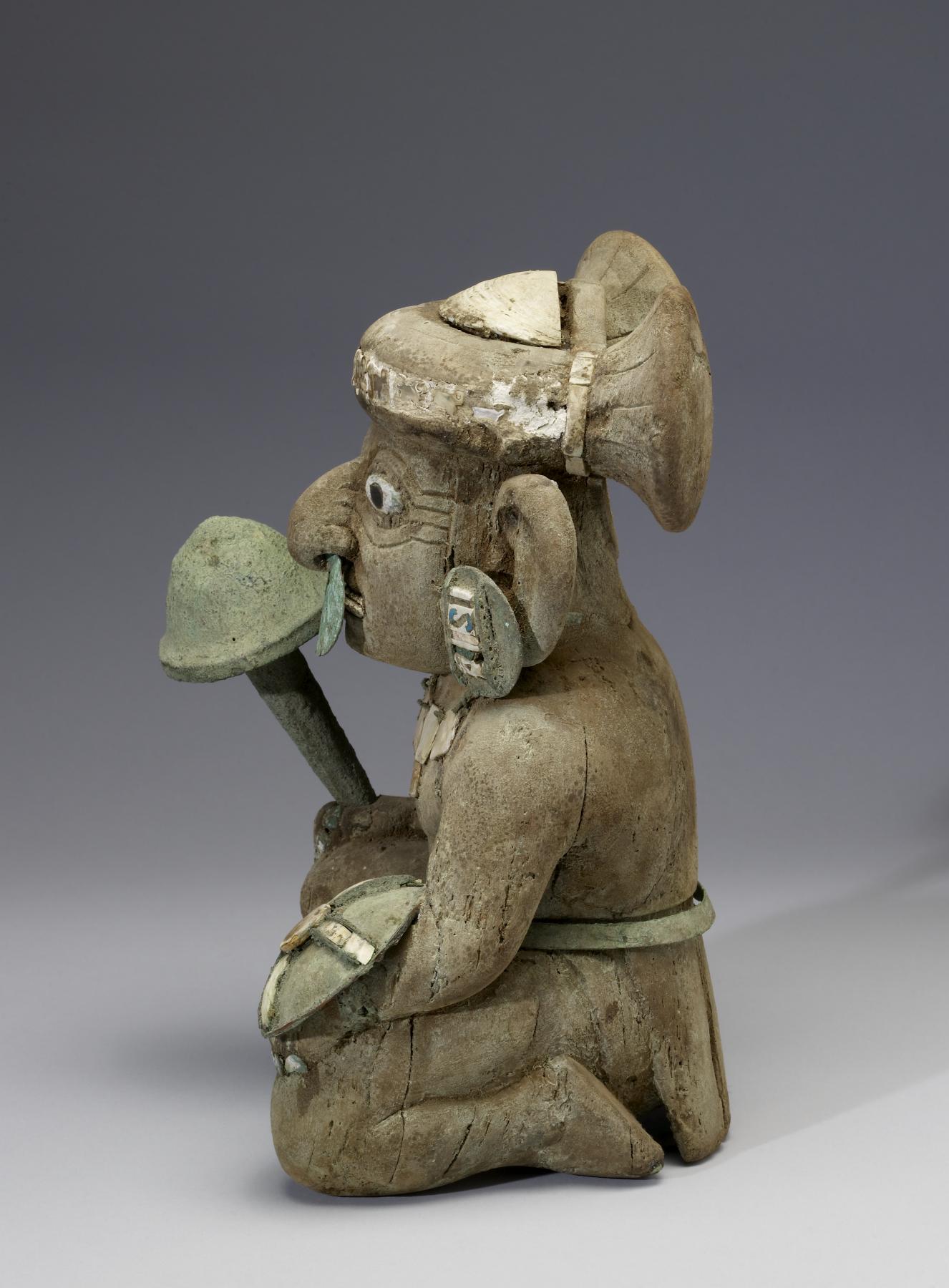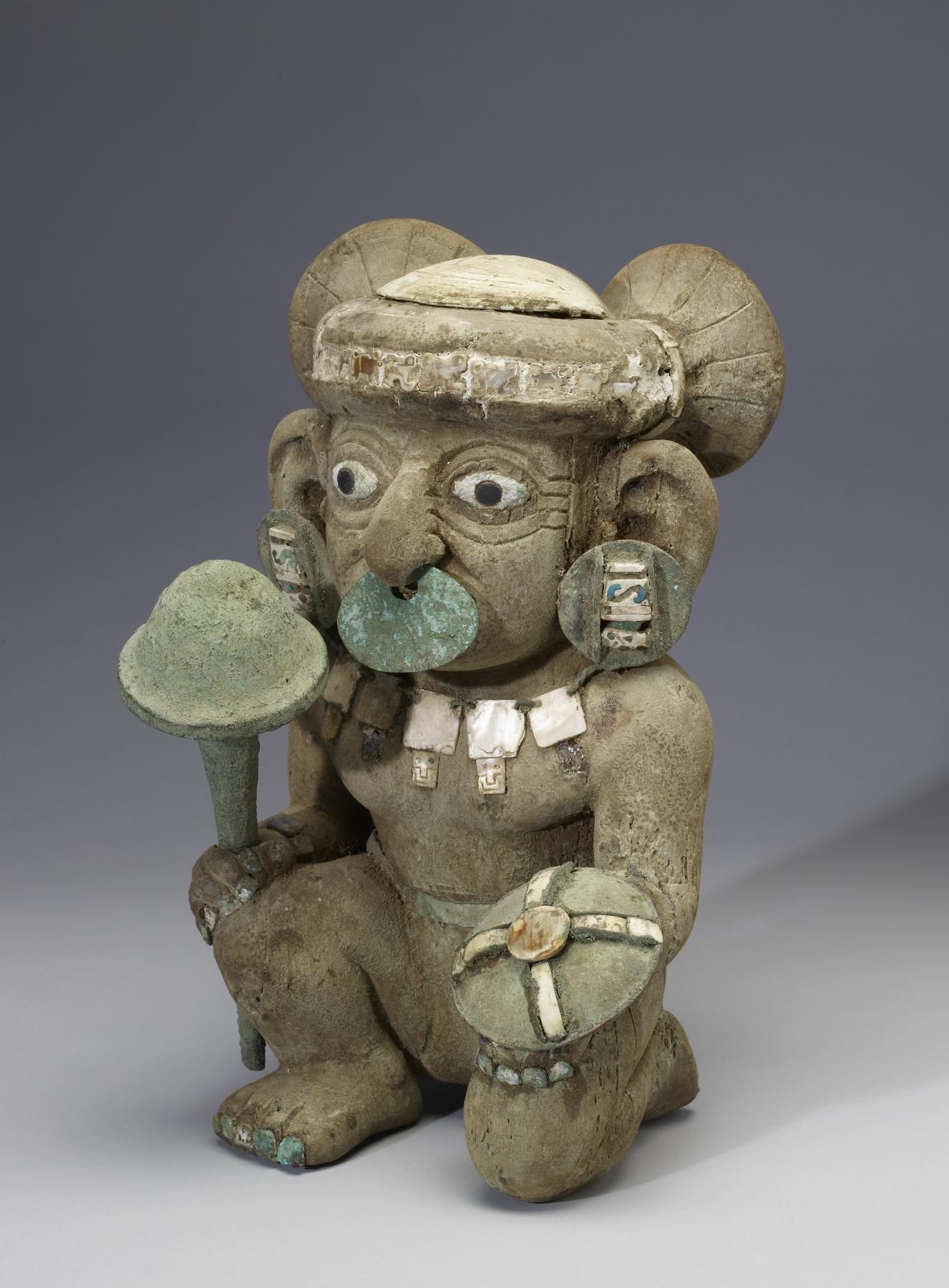Warrior Effigy
(Ancient Americas )
Provenance
Provenance (from the French provenir, 'to come from/forth') is the chronology of the ownership, custody, or location of a historical object.
Private collection, Florida; Ron Messick Fine Arts, Santa Fe, New Mexico; purchased by John G. Bourne, Sante Fe, 1999; given to John G. Bourne Foundation, 2000 [1]; given to Walters Art Museum, 2013.
[1] according to Bourne Foundation accounts
Exhibitions
| 2012-2013 | Exploring Art of the Ancient Americas: The John Bourne Collection Gift. The Walters Art Museum, Baltimore; Frist Center for the Visual Arts, Nashville. |
Conservation
| Date | Description | Narrative |
|---|---|---|
| 1/1/2011 | Treatment | Wood can be dated using a technique called carbon-14 dating, which calculates the date when the tree from which the wood came was last living. It does not give you the date when the piece was carved. X-radiography and visual inspection show that this figure is assembled from several pieces of wood that appear to be in different states of preservation. This required taking more than one sample for carbon-14 analysis from different parts of the figure. The samples yielded two different date ranges—ca. 1300–1400 CE and ca. 1700–1900 CE—both ranges being more than 600 years after the demise of the Moche culture. Yet many decorative elements are Moche in style, and some, such as the copper alloy mace head, are encrusted with ancient burial corrosion or have traces of ancient burial textiles. In contrast, the staff of the mace is a modern addition that was covered with crushed mineral corrosion to make it look ancient. The earflares, however, appear to be of Moche origin, but the lack of corresponding corrosion in where the posts fit into the figure’s ears suggests they are not original to this sculpture. This warrior figure continues to pose challenging questions concerning its date of manufacture. Although the carbon-14 samples indicate it was not made during Moche times, small details, such as the remnants of a copper alloy bracelet behind the shield and traces of textile fibers along the toenails of the hidden foot, appear to be ancient. Together, these findings suggest that the figure is a modern pastiche using a variety of ancient materials. |
Geographies
Peru, North Coast (Place of Origin)
Measurements
Body H: 11 1/2 x W: 6 15/16 x D: 5 7/8 in. (29.2 x 17.7 x 15 cm); Mace L: 8 1/4 x Diam: 2 11/16 in. (21 x 6.8 cm)
Credit Line
Gift of John G. Bourne Foundation, 2013
Location in Museum
Not on view
Accession Number
In libraries, galleries, museums, and archives, an accession number is a unique identifier assigned to each object in the collection.
In libraries, galleries, museums, and archives, an accession number is a unique identifier assigned to each object in the collection.
2009.20.242

